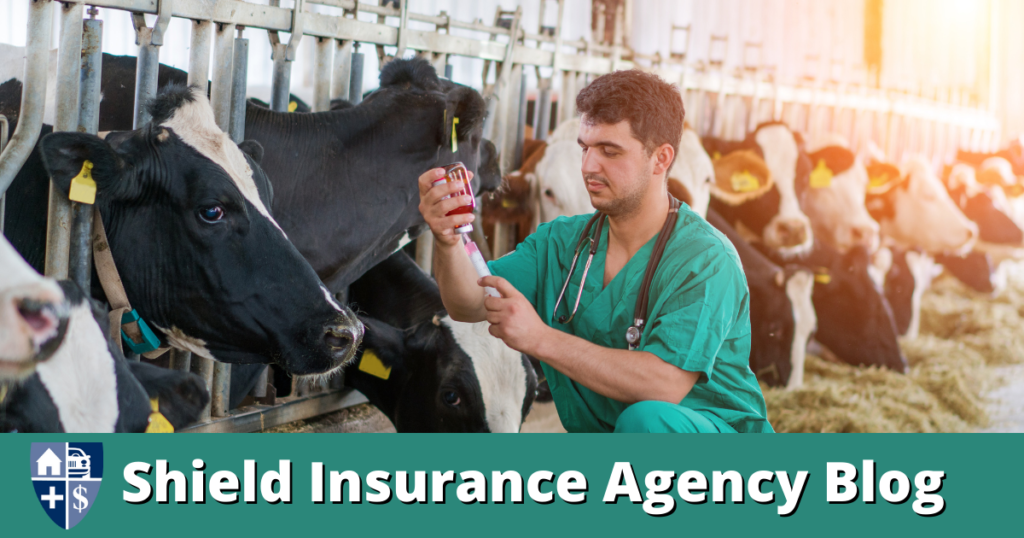NPR.org | SCOTT NEUMAN | December 19, 20225:00 AM ET | Farm Animals | Farm & Ranch Insurance
One night last spring, Andy Berry, a livestock farmer in Mississippi, was working the phone. One of his cows was experiencing a life-threatening breech birth and his regular veterinarian, 40 minutes away, was unavailable.
Berry, who is also executive vice president of the Mississippi Cattlemen’s Association, spent two hours calling around for help, finally reaching another vet, who immediately made the one-hour drive to his farm in rural Jefferson Davis County.
By the time she arrived, it was too late. “Ultimately, we ended up losing both the cow and the calf,” Berry, 48, says. “Between the time it took to get to the farm and the complications of the labor, it was too much.”
The death of the cow and calf cost him about $1,800, he says.
Experiences similar to Berry’s are becoming more common across the country. For decades, farmers have endured a shortage of rural veterinarians – the kind who specialize in care for animals like cows, pigs and sheep. But the problem is now at an all-time high – with 500 counties across 46 states reporting critical shortages this year, according to the U.S. Department of Agriculture.
Some counties have no vets to treat farm animals
“We are losing animals because we just have no one to come to the farm in time to save them,” said Sen. Cindy Hyde-Smith (R-Miss.) in a Dec. 6 hearing of the Senate Committee on Agriculture, Nutrition and Forestry. “We have counties in Mississippi that don’t even have a large animal veterinarian.”
The shortage is mirrored by a growth in the number of veterinarians that Americans are much more familiar with – those who take care of the family pet. Since at least the early 2000s, more veterinarians have chosen the better pay and more reasonable work hours that go with a practice that focuses primarily or exclusively on “companion” animals. With the COVID-19 pandemic-driven spike in pet ownership, demand – and salaries – for companion animal veterinarians have increased rapidly, according to the American Veterinary Medical Association, or AVMA.
The implications of this shortfall go beyond the farm. Some farmers and the AVMA warn that without enough vets on the front line, the food supply chain is vulnerable to diseases such as foot and mouth and swine flu.
“Food-animal veterinarians are a front-line defense in the surveillance, prevention, treatment, and control of animal diseases,” AVMA President Dr. Lori Teller wrote in an email to NPR. “Veterinarians help to protect the health and welfare of animals that produce eggs, milk, meat, wool, and other protein and fiber products,” she says.
Teller says that among veterinary school graduates, nearly half are choosing to work exclusively with companion animals, with another 8% selecting mixed practices, where they might treat a dog and cat one day and a cow the next. Fewer than 3% of recent graduates choose to work exclusively with food animals, with others deciding to pursue advanced degrees or go into specialties, such as horse care.
The burnout problem
Despite the clear need, many who start out working with food animals find that the grueling and sometimes dangerous work leads to burnout.
Dr. Remington Pettit, 37, has seen both sides of the profession. She grew up in rural Oklahoma, and attended veterinary school at Oklahoma State University. When Pettit graduated, she chose to work in mixed practices, focusing on the treatment of horses and cattle in her native state.
“I worked the sale barn,” Pettit says, referring to cattle auctions. “I did spay-neuter. I did farm calls. I did emergencies. It was all hours of the day, 365 days a year.” In the rural area she covered, a considerable amount of driving to appointments made the days even longer.
About five years ago, she hit a breaking point. Pettit, 37, was still carrying university debt, and just starting a family. For her, it was mainly exhaustion and the physical toll of working with large animals that prompted a switch to companion animals – where she says she makes double the money she did just a few years ago. But the physical demands of the job and its inherent dangers were also factors in her decision, she says.



















































